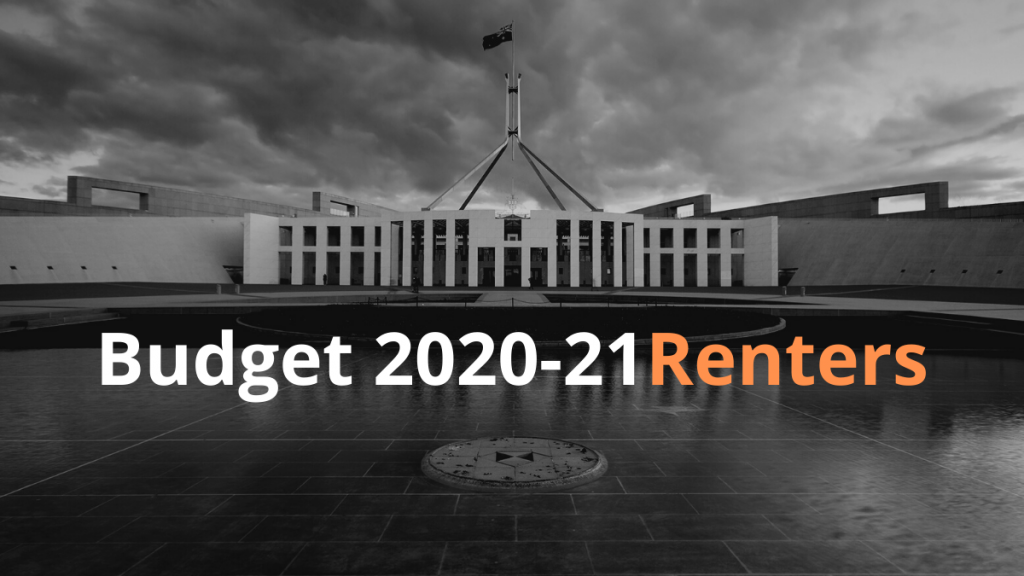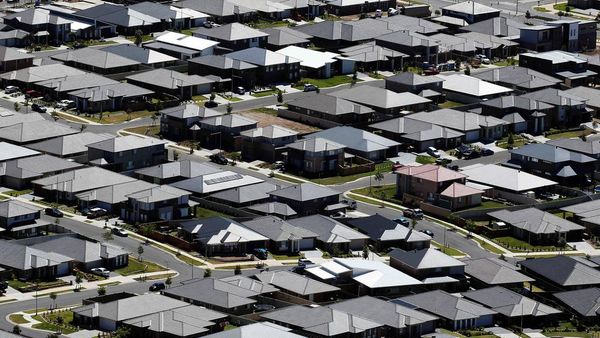Renters: What's in Budget 2020-21 for you?
Australia’s 2020-21 Budget has been delivered and includes a plan for economic recovery post-COVID-19. So, what might this mean for renters across Australia?
Read Treasurer Josh Frydenberg’s Budget speech here.
Federal Treasurer Josh Frydenberg said this Budget is “all about jobs,” as he unveiled details in the House of Representatives on Tuesday, October 6.
“Tonight, we embark as a nation, on the next stage of the journey. There is no economic recovery without a jobs recovery. There is no Budget recovery without a jobs recovery,” he said.
Adrian Kelly, president of the Real Estate Institute of Australia said the 2020-21 Budget has provided an “encouraging outlook” for all stakeholders.
“The Australian government’s focus on creating employment and generating re-employment through various Budget measures is good news for tenants, investors, homeowners and those wishing to sell,” he said.
So, what does the Budget have in store for renters and the country’s real estate industry as a whole?
Tax cuts for workers, and some support for low and middle-income Australians
In an attempt to increase consumer spending, Stage two of the Government’s Personal Income Tax Plan has been brought forward by two years.
This Budget includes tax cuts for most Australian workers, by bringing forward income tax cuts that were scheduled for mid-2022.
From July 1, 2020 (backdated):
- The low-income tax offset will increase from $445 to $700
- The top threshold of the 19% tax bracket will increase from $37,000 to $45,000
- The top threshold of the 32.5% tax bracket will increase from $90,000 to $120,000.
Mr Kelly said bringing forward (and backdating) the Stage 2 tax cuts should improve borrowing capacity, but also housing affordability. “This comes at a time when the outlook for interest rates will remain low until at least 2023,” he said.
The offset will remain in place for the 2020-21 financial year, which means workers will keep an extra $1,080 on top of the tax cut. Something to keep in mind: It will snap back in 2021-22, so middle-income earners will pay more tax next year than they will in 2020.
Treasury says over 11 million Australians should benefit from this tax cut, with more than 7 million people expected to receive $2,000 or more in tax relief for the 2020-21 income year, compared to previous years.
A missed chance to build social housing
There were no funds to increase social housing in the 2020-21 Budget, and income support payments are facing cuts – factors which could result in a surge in homelessness, or people facing extreme rental stress.
The Budget includes more concessional loans for affordable housing, but nothing for the subsidy needed to make new housing affordable to people on low incomes.
It also includes a cut of $41.3 million from homeless funding in July 2021.
The Federal Government has made small temporary increases in funding to remote Indigenous communities in Queensland and the Northern Territory, but remote housing funding is less than half the funding level in 2017/18.
New opportunities for first home buyers
As of October 6, extra places have been made available to support you purchasing a new home or newly built home.
If you’re an eligible applicant, you can purchase a home with a deposit of just 5%, without paying lender’s mortgage insurance under the First Home Loan Deposit Scheme (FHLDS). Certain price restrictions based on location do apply.
There were 10,000 places made available in the FHLDS in the 2020-21 financial year – and all 5,000 non-major lender quota places were filled within the first three months of the financial year.
Something to note: While the scheme has opened up new places, there is a tighter set of requirements, restricted to the building of a new home, or the purchase of a newly built home. This was not a requirement of the original scheme.
Mr Kelly commented that the 2020-21 Budget was a lost opportunity in helping more Australians into their first homes. “The scheme should be extended to all eligible buyers of all homes, not just new builds,” he said.
For renters looking to step into homeownership, the FHLDS can be used in conjunction with the First Home Super Saver Scheme and HomeBuilder grants, as well as grants and concessions in your state/territory.
A few points to keep in mind:
The 2020-21 Budget assumes that Australia won’t see any more widespread outbreaks of COVID-19 or lockdowns, as we’ve seen in Victoria.
The economic assumptions outlined in this year’s Budget also predict that a COVID-19 vaccine will be rolled out to Australians by the end of 2021. They also rely on all state borders being open by Christmas 2020 – the small exception being Western Australia.
The Budget also assumes WA is going to lift its border restrictions by April 2021 – not long after the state election.
Originally published on rent.com.au




